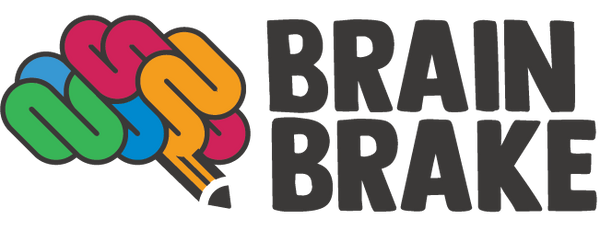🎨 Coloring and the ADHD Brain: A Gentle Way to Focus, Calm, and Connect
At BrainBrake, we believe in the power of color to do more than decorate—it can soothe, center, and support the beautifully complex minds of those with ADHD. Whether you're a caregiver, educator, or someone navigating ADHD yourself, coloring offers a surprisingly powerful way to regulate emotions and attention. Here's why.
🧠 What’s Happening in the ADHD Brain?
ADHD (Attention Deficit Hyperactivity Disorder) affects the brain’s executive functions—things like focus, impulse control, and emotional regulation. For many, this means:
- Racing thoughts
- Sensory overwhelm
- Difficulty transitioning between tasks
- Emotional highs and lows
Coloring offers a low-pressure, sensory-rich activity that gently engages the brain without overstimulating it. It’s not just fun—it’s functional.
✍️ Why Coloring Works
Coloring activates multiple calming mechanisms at once:
- Repetitive motion soothes the nervous system. The rhythmic back-and-forth of coloring can help shift the body into a parasympathetic “rest and digest” state.
- Focus without pressure. Coloring provides structure (lines, shapes) without demanding perfection. This helps ADHD brains practice sustained attention in a low-stakes way.
- Sensory input that feels good. Choosing colors, feeling the texture of paper, and watching a picture come to life can be deeply satisfying—especially for those who crave tactile feedback.
🎯 Coloring as Mindful Attention Training
Studies show that coloring complex patterns like mandalas can reduce anxiety and improve focus, especially in individuals with ADHD. It’s a form of active mindfulness—anchoring attention in the present moment without requiring stillness or silence.
🌈 Color Choice Matters
Color itself can influence mood and attention:
- Cool tones (like blue and green) promote calm and concentration.
- Warm tones (like red and orange) can energize or overstimulate, depending on the person.
- Personal preference plays a big role—what feels calming to one person might feel dull to another.
Encouraging kids (and adults!) to choose colors that “feel good” is part of the emotional intelligence practice.
🖍️ How to Use Coloring for ADHD Support
Here are a few BrainBrake-style tips to make coloring a meaningful tool:
- Offer coloring during transitions (e.g., after school, before homework) to ease into focus.
- Use it as a “brain break” between tasks to reset attention.
- Let the person choose the page and colors—autonomy builds buy-in.
- Try pairing coloring with calming music or a quiet space for extra sensory support.
💬 Final Thought: It’s Not Just a Hobby—It’s a Tool
Coloring isn’t a cure for ADHD, but it’s a powerful support strategy. It invites calm, builds focus, and creates space for self-expression. And in a world that often asks ADHD brains to “sit still and pay attention,” coloring offers a different invitation: “Come as you are. Let’s make something beautiful.”
📚 Sources
- How Coloring Helps the ADHD Brain – ADDitude Magazine
- The Science Behind Coloring and Focus – Understood.org
- Coloring as a Mindfulness Practice – Healthline
- Mandalas and Attention Regulation – National Institutes of Health

